The UK’s first carbon capture and storage (CCS) projects have been given the go-ahead. However, questions are being asked about their value for money and how quickly the next projects will be rolled out.
After more than 15 years of cancellations and delays by successive governments, contracts for the first projects were signed in December. These include a gas power plant on Teesside, expected to be producing electricity in 2028 and to capture 95% of its emissions – some 2 million tonnes of carbon dioxide every year – and the transport and storage infrastructure to handle 4 million tonnes of emissions annually.
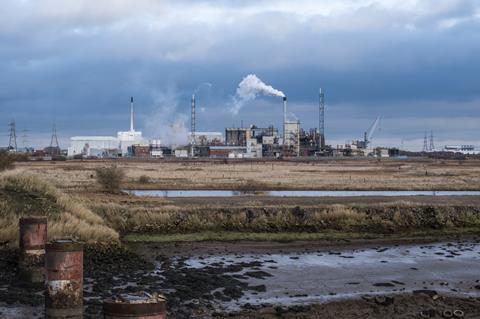
Another three projects in this first round are under negotiation: capturing carbon dioxide from methane-based blue hydrogen production and energy from waste, as well as the transport and storage infrastructure required in a second industrial cluster on Merseyside. These will get a share of the £21.7 billion committed by government last year. So far, no financial details have been disclosed about the deals, or the cost of other projects that have been chosen for these first two industrial clusters.
Now a committee of MPs has questioned the cost effectiveness of the projects and warned against over-reliance on carbon capture at the expense of other routes to decarbonisation, such as renewables.
The government has acknowledged a target of capturing 20–30 million tonnes of carbon dioxide a year by 2030 is no longer feasible. However, it has yet to set out how it can now meet the legally binding goals of the sixth carbon budget for 2033 to 2037 as defined by the Climate Change Committee (CCC). The CCC envisaged 22 million tonnes being stored each year by 2030, whereas if all eight projects shortlisted for the first round go ahead they will capture just 4.9 million tonnes annually by 2030. The potential storage capacity of the first two clusters is 8.5 million tonnes and the government has received bids from emitters who want to fill the remaining space.
Controversially, the first capture project will be on a gas power station, rather than on an industrial facility such as a cement works, where process emissions are hard to reduce. Heidelberg cement’s Padeswood plant in north Wales, also chosen in the first round, aims to capture 800,000 tonnes of carbon dioxide annually, which will reduce carbon in UK infrastructure projects. The company’s first CCS plant is under development in Norway and expected to begin operating this year.
Another proposed cluster is in the Peak District but would require a separate pipeline, highlighting concerns about how the government will tackle dispersed sites that don’t sit in its chosen industrial clusters. Discussions are ongoing with those projects and with GB Energy and the national wealth fund to explore co-investment opportunities. ‘One of the challenges is that if we really want to get costs down for [CCS] then it needs to be everything all at once, which is maybe politically more challenging than [the current] incremental process,’ suggests Toby Lockwood, a chemist who works on carbon capture at the Clean Air Task Force.
In its advice to government last November, the National Energy System Operator proposed two pathways to reach the government’s goal of clean power by 2030, one without and one with CCS on gas power stations. It said that deploying CCS on gas-fired power stations could deliver a lower overall system cost and provide more flexibility compared with opting for a system with more renewables.
Modelling by University College London suggests no gas CCS would be required under a more stringent scenario of a net zero grid by 2030. However, it does require some bioenergy carbon capture and storage (Beccs) – a technology being investigated at the Drax biomass plant in North Yorkshire. This technology is, in theory, carbon negative as carbon dioxide is captured by the wood fuel as it grows with the resulting emissions captured.
Not using CCS with electricity generation, ‘doesn’t mean there’s no CCS in the economy as a whole, [for example] for hydrogen production’, says Jim Watson, a climate change and energy policy specialist at UCL’s Institute for Sustainable Resources. ‘Everything’s interconnected – it’s a systems problem. So just looking at the power sector in isolation can be a little misleading if you don’t think about what’s happening elsewhere.’
Gas challenges
But opting for CCS on a gas power station – as opposed to a cement plant, for example – poses technical challenges owing to a carbon dioxide concentration of less than 4% in the flue gas, compared with 15–30% for a cement plant. Analysts at Carbon Tracker, a financial thinktank focused on the energy transition, also warn that operating a plant flexibly requires greater volumes of toxic amine solvent to capture the carbon dioxide and can increase emissions of nitrous oxides, which contribute to global warming. A spokesperson for Net Zero Teesside Power says all these parameters were considered in the engineering design and are covered in the consenting and approvals process for the plant. Additionally, gas turbine flue gas has fewer of the particulates that can affect performance and solvent regeneration.
Capture technologies are advancing, but UK projects are opting to use amines. ‘The technology was decided quite a long time ago and it’s a known technology,’ says Peter Styring, an expert on carbon capture and utilisation at the University of Sheffield. However, energy is required to regenerate the chemical solvent and the solvent itself must be regularly replenished. Styring and his colleagues have developed a pressure swing system that uses a solid adsorbent, which has been piloted at British Steel’s Scunthorpe plant and on biomass boilers using wood waste from UK paper mills.
The Net Zero Power consortium, which will run the gas turbine, has opted for Shell’s Cansolve amine system, which Shell is also deploying at its Scotford chemical complex in Canada. It’s already been used for almost a decade at Sask Power’s Boundary Dam coal plant in Canada and is frequently used as an example of how CCS under-delivers. The plant has been beset by technical problems, but analysis by the Clean Air Task Force suggests that when the capture plant does receive flue gas from the power station it consistently meets its 90% capture target. ‘The fundamental chemistry of removing CO2 using these solvents works well and the shortfalls are associated with more mundane operation and design challenges that chemical engineers are very familiar with resolving,’ says Lockwood. He notes that Canada’s carbon price doesn’t particularly incentivise efforts to maximise capture rates, whereas both the contract signed in the UK and its environmental permit do.
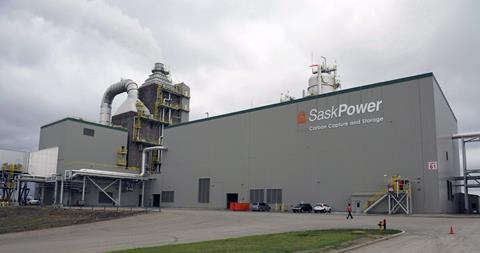
He adds that cement plants in Europe are now looking at solid sorbents, as well as oxyfuel based capture processes.
Gas power plants with CCS will also have to consider upstream methane emissions. Methane is a powerful greenhouse gas, with a warming impact 84 times that of carbon dioxide over 20 years. Analysts at Carbon Tracker have investigated the carbon intensity of different sources and found that LNG from the US can have at least double the intensity of gas imported from Norway and would breach the UK’s low carbon hydrogen standard. Worryingly, they suggest that even gas that is compliant with the UK standard would only reduce emissions by 66%. Net Zero Power says it aims to source from the UK and Norway.
Getting costs down
UCL’s analysis concludes that the £21.7 billion the government has allocated to the initial CCS projects should be enough to cover their capital and operating costs, but that the scope for cost reduction, and learning, will be limited by the diversity of projects the government has chosen. ‘It is somewhat of a dilemma for government: there is a good argument for diversity [to] test and demonstrate the technology,’ says Watson. ‘But to get better technology [which] gets cheaper and more attractive in future, then the best thing to do is replication and standardisation. This is a fine first step, but we need another round of projects and another round of subsidies soon.’
But in a constrained public spending environment, how will the next projects get the go-ahead? While the EU provides some subsidies for CCS, it also requires oil and gas companies to contribute to its storage target of 50 million tonnes per year by 2030, depending on their output. By contrast, UK CCS developers are entirely dependent on subsidies, although the aim is to remove these and have a self-sustaining industry by 2035. But there are concerns that relying on the carbon price in the UK’s emissions trading system (ETS) alone won’t be enough to achieve it. The oil and gas industry puts the costs of full chain CCS at anywhere between £115 to £165 per tonne of carbon dioxide, whereas prices on the UK’s ETS are now around £40.
Alongside others at the University of Oxford, thinktank Carbon Balance has proposed a carbon takeback obligation, whereby oil and gas companies are required to store an increasing percentage of the carbon dioxide embedded in the products they’re selling. ‘It starts small and scales up to what’s required. Companies could meet this obligation by either developing their own storage projects or creating a carbon storage market, where they pay others to store it on their behalf,’ suggests Carbon Balance co-founder Mirte Boot. Once subsidies start scaling down, the carbon market and the mandate would work together to deliver capacity and emissions reductions in line with net zero goals.
The proposals have risks, including impacts on competitiveness, although there are potential upsides. ‘Obviously, CCS is one pillar of the energy transition, but it can’t be the only pillar,’ says Boot. ‘We can’t store all our current emissions anyway – and we shouldn’t want to. One interesting element of a mandate is that you’re no longer subsidising fossil fuel companies and adding a cost to fossil fuels in the market will make the alternatives more competitive.’
The UK CCS industry has long argued it could create a valuable export, by allowing countries on the European continent to store their carbon dioxide in UK sites. But for that to happen there would have to be regulatory alignment, including a linkage of the EU and UK emissions trading systems.
Others argue that exploring the full value chain, where captured carbon dioxide can be used to make chemicals or sustainable aviation fuels could also help the economics. Emrah Durusut, a senior partner at environmental consultancy Xynteo who has previously advised governments on CCS strategy, suggests that ‘if there was some demand already included in the projects [that] lowers the government subsidy that might be required upfront, because there might be some green premium on the product itself and secondly, having these customers lined up, typically derisks the project as well’.
Emissions removals
The government’s original 2030 targets also include 5 million tonnes of greenhouse gas removals, achieved through adding carbon capture to a biomass power plant. It’s already provided over £6 billion in subsidies to the Drax power station to make the switch from coal to burning wood pellets, although questions remain over the sustainability of this fuel and actual emissions reductions. The project didn’t get the go-ahead in the first round of CCS, but the government has extended subsidies for its operations until 2031, while tightening sustainability criteria.
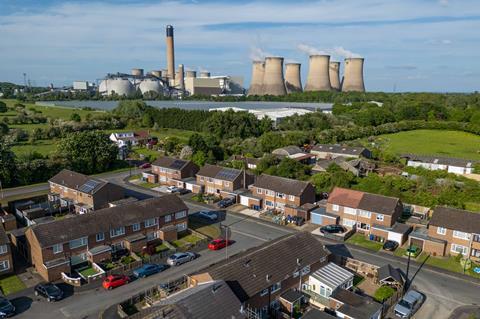
It plans an independent review of how greenhouse gas removals (GGR) can help the UK meet its net zero targets and has commissioned the BSI to develop standards to ‘ensure that government-sponsored GGR credits are underpinned by rigorous carbon accounting methodologies and sustainability standards that reflect the latest science and international best practice’.
Drax says it’s confident the review will reaffirm the role for greenhouse gas removal technologies in meeting net zero and that installing two Beccs units at its North Yorkshire site could remove 8 million tonnes of carbon dioxide a year.





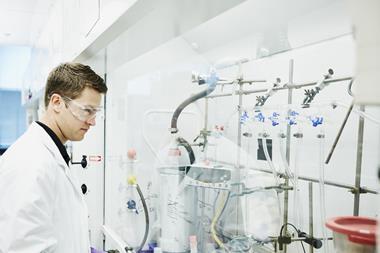
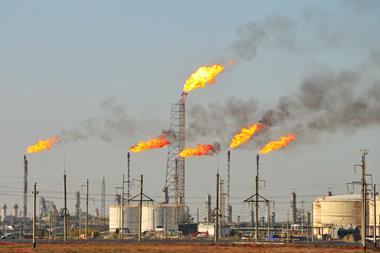

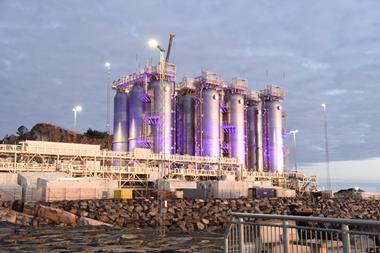
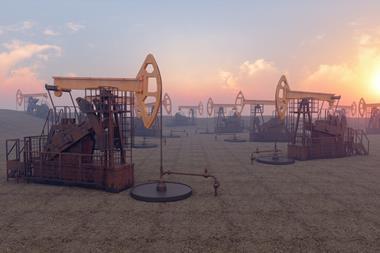
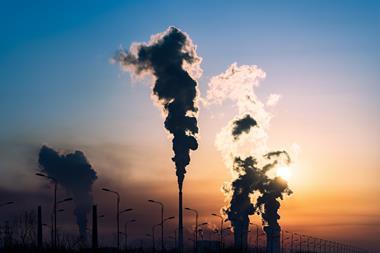



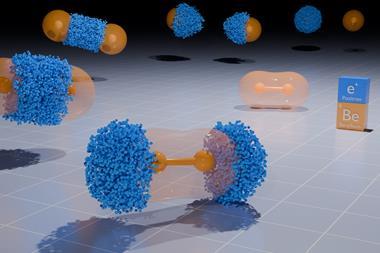


No comments yet